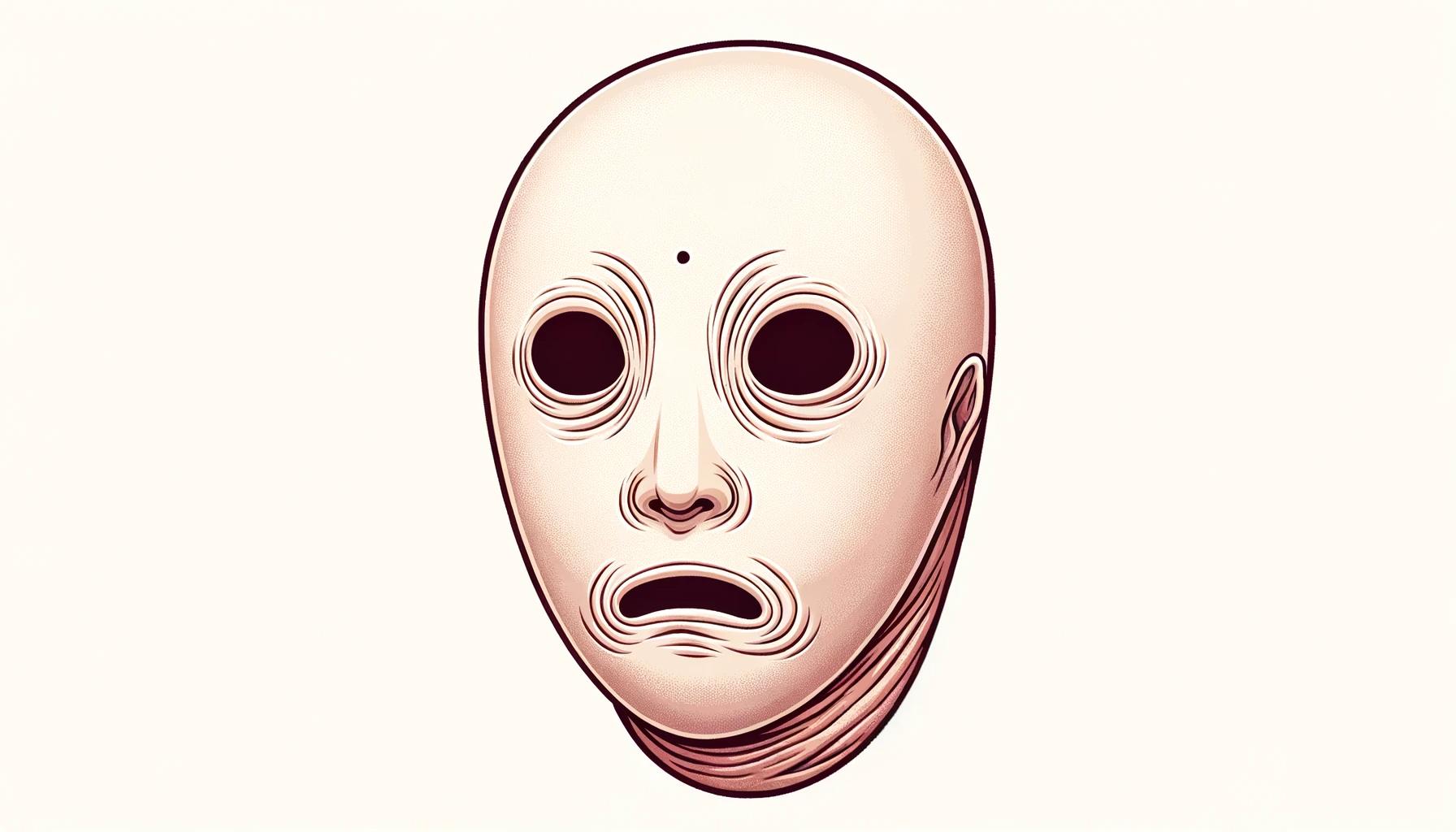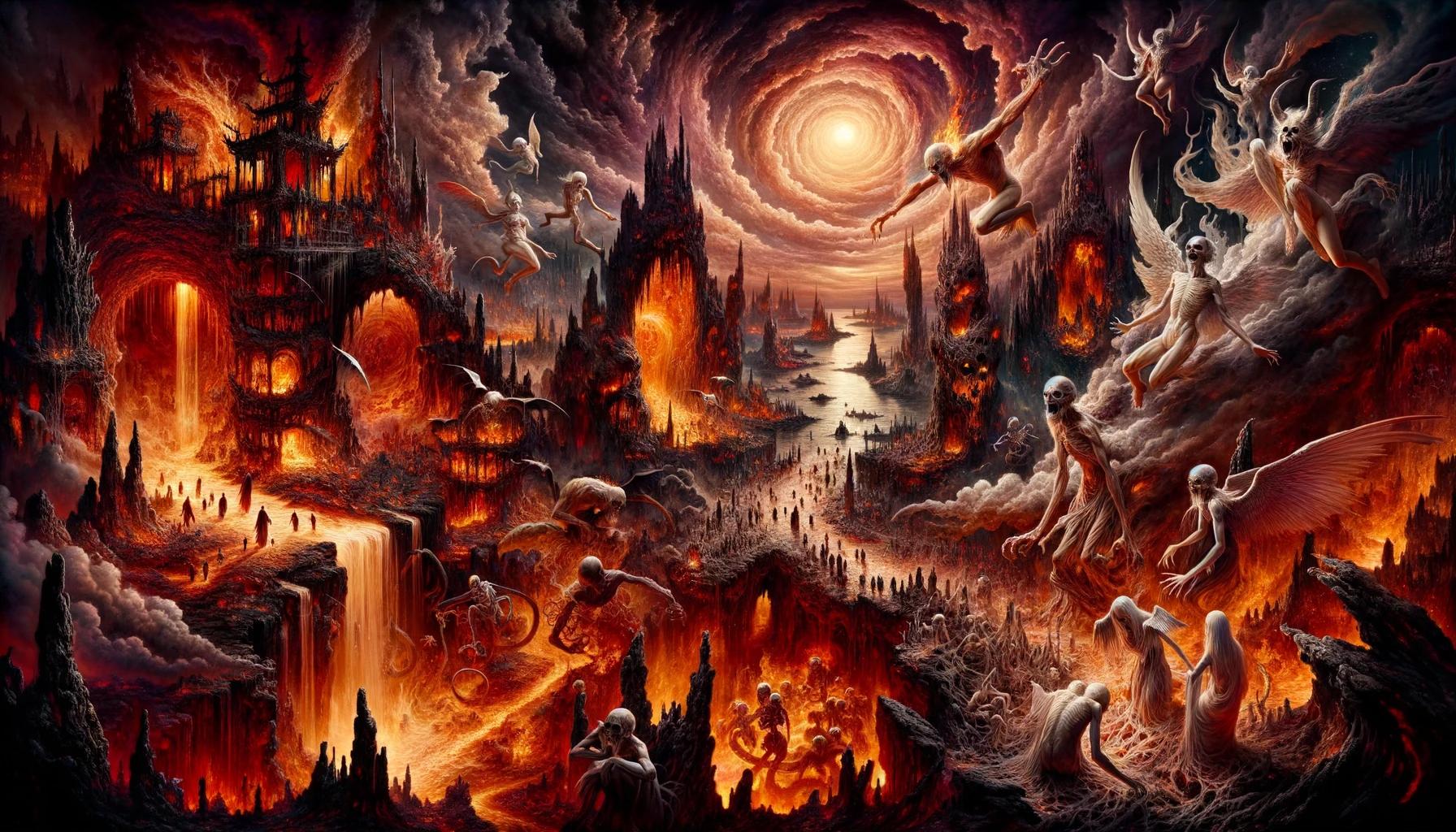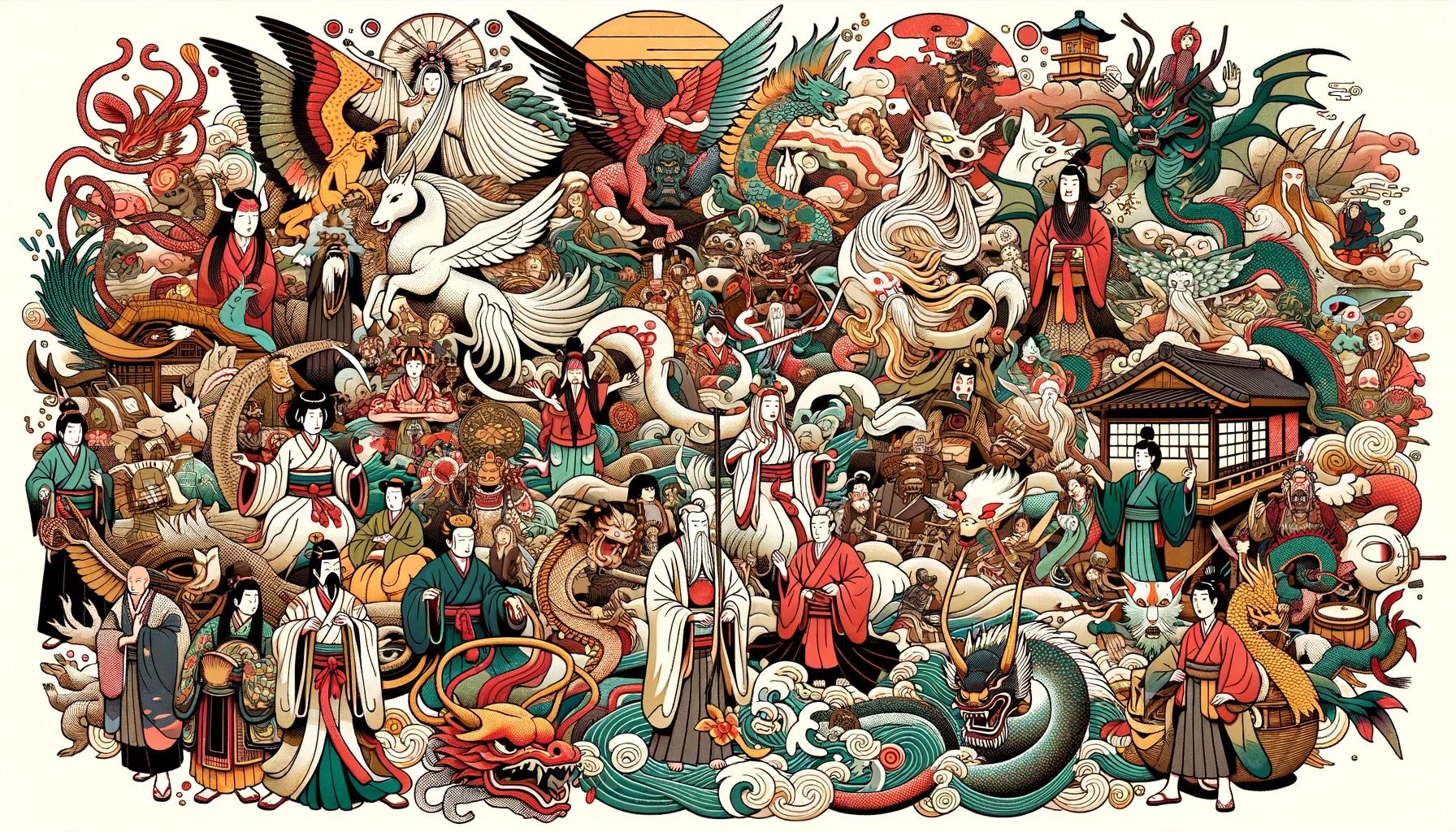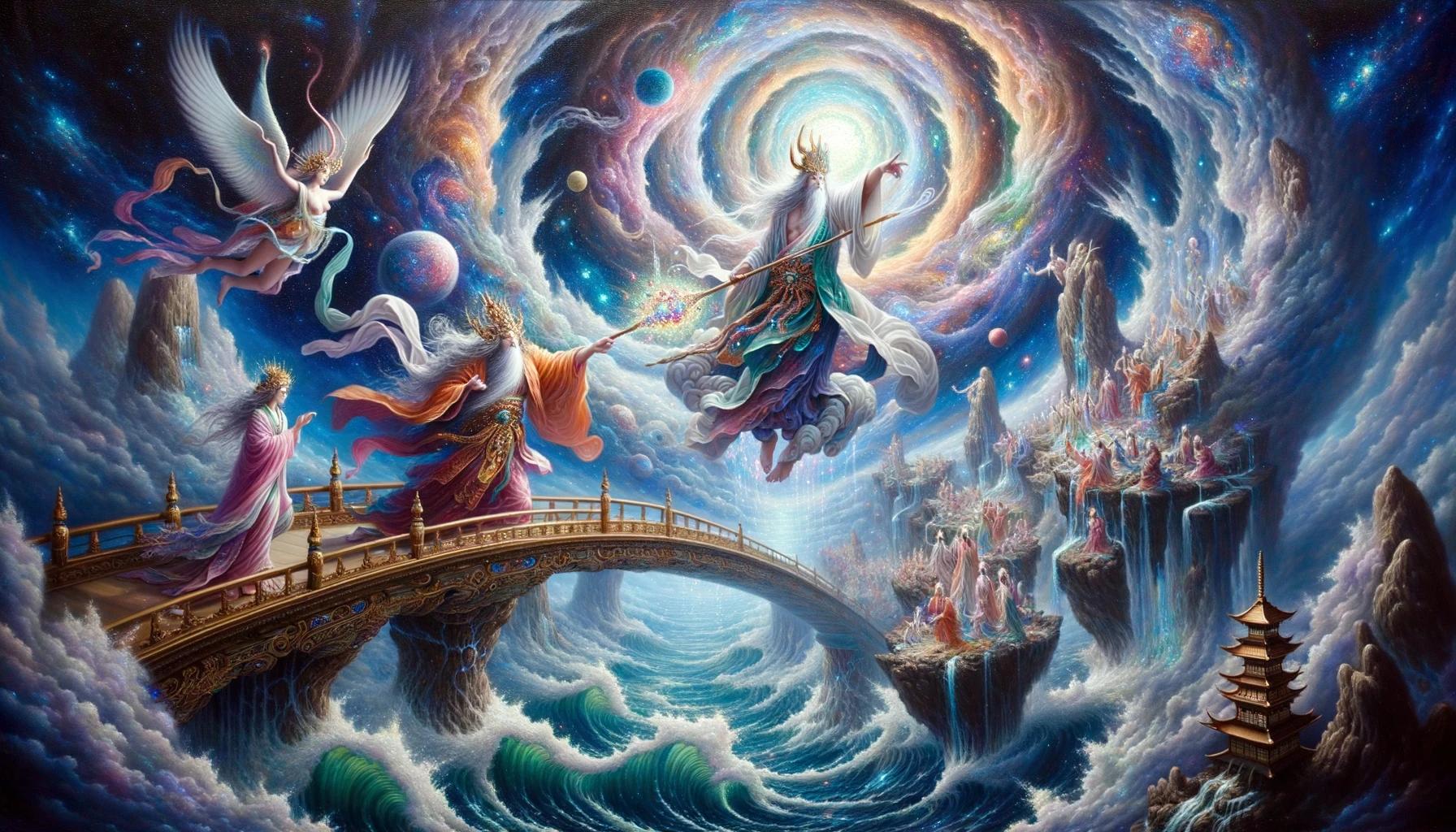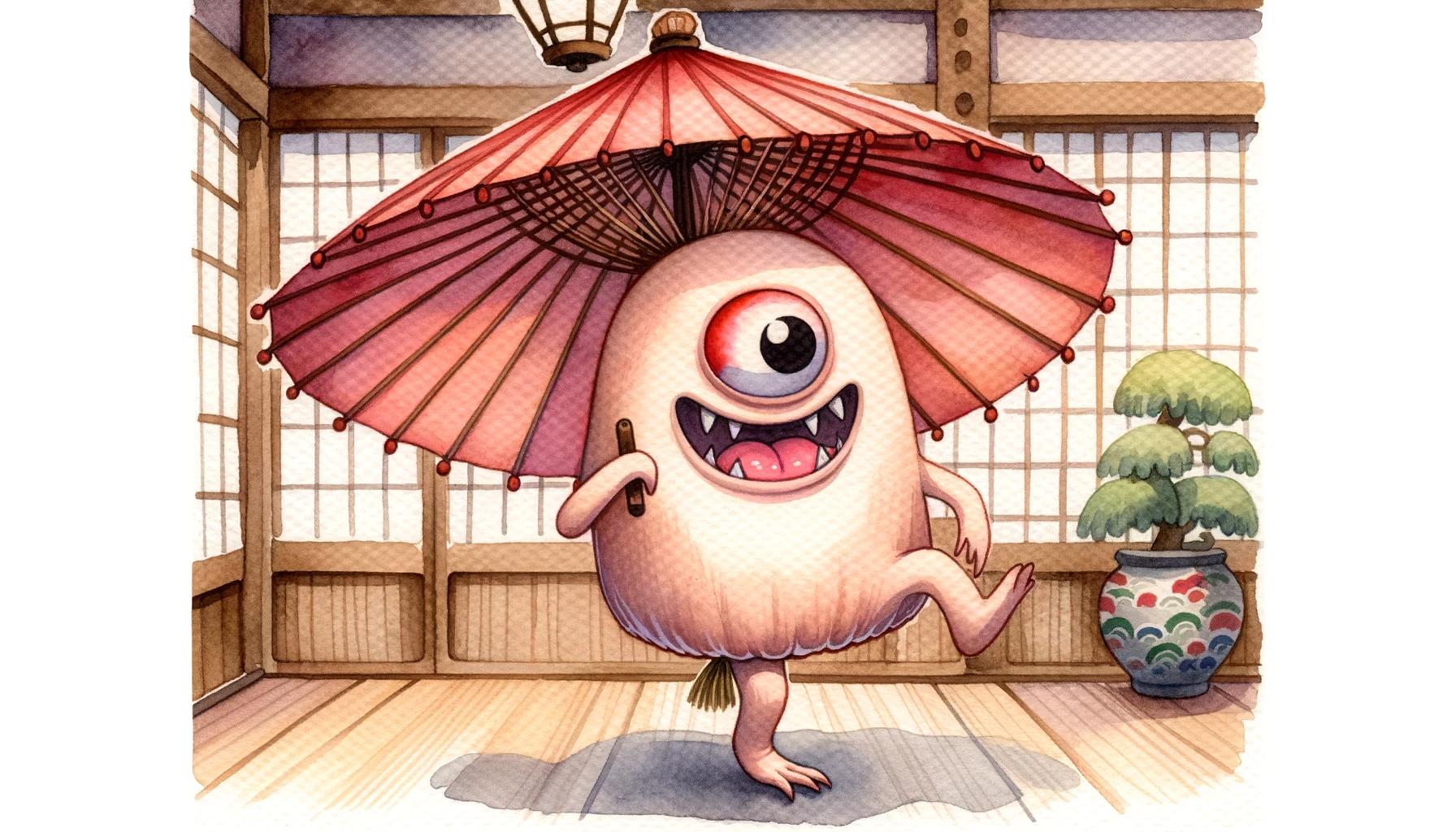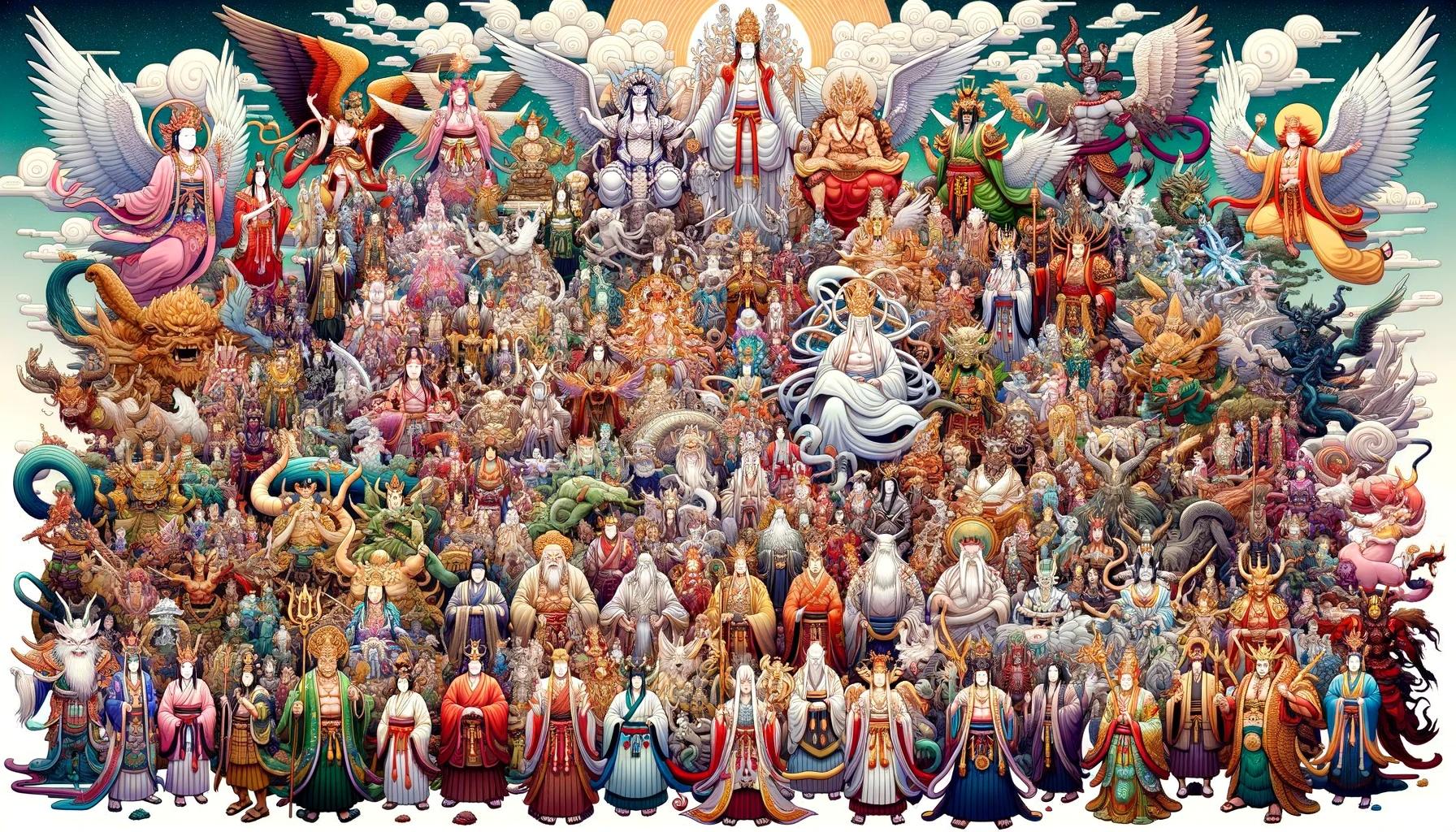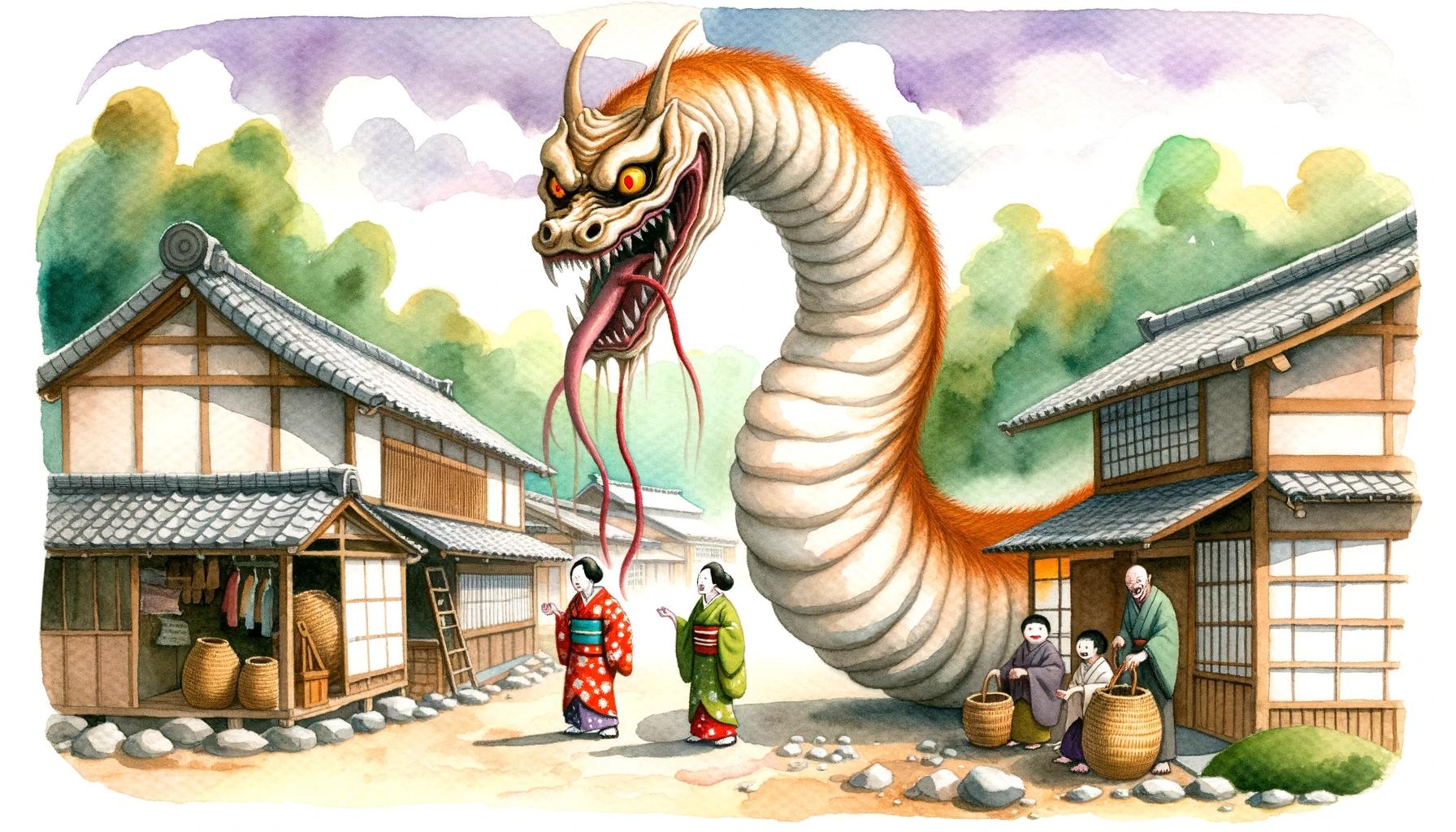Noppera Bo Yokai: Unveiling the Terrifying Faceless Spirit of Japanese Folklore
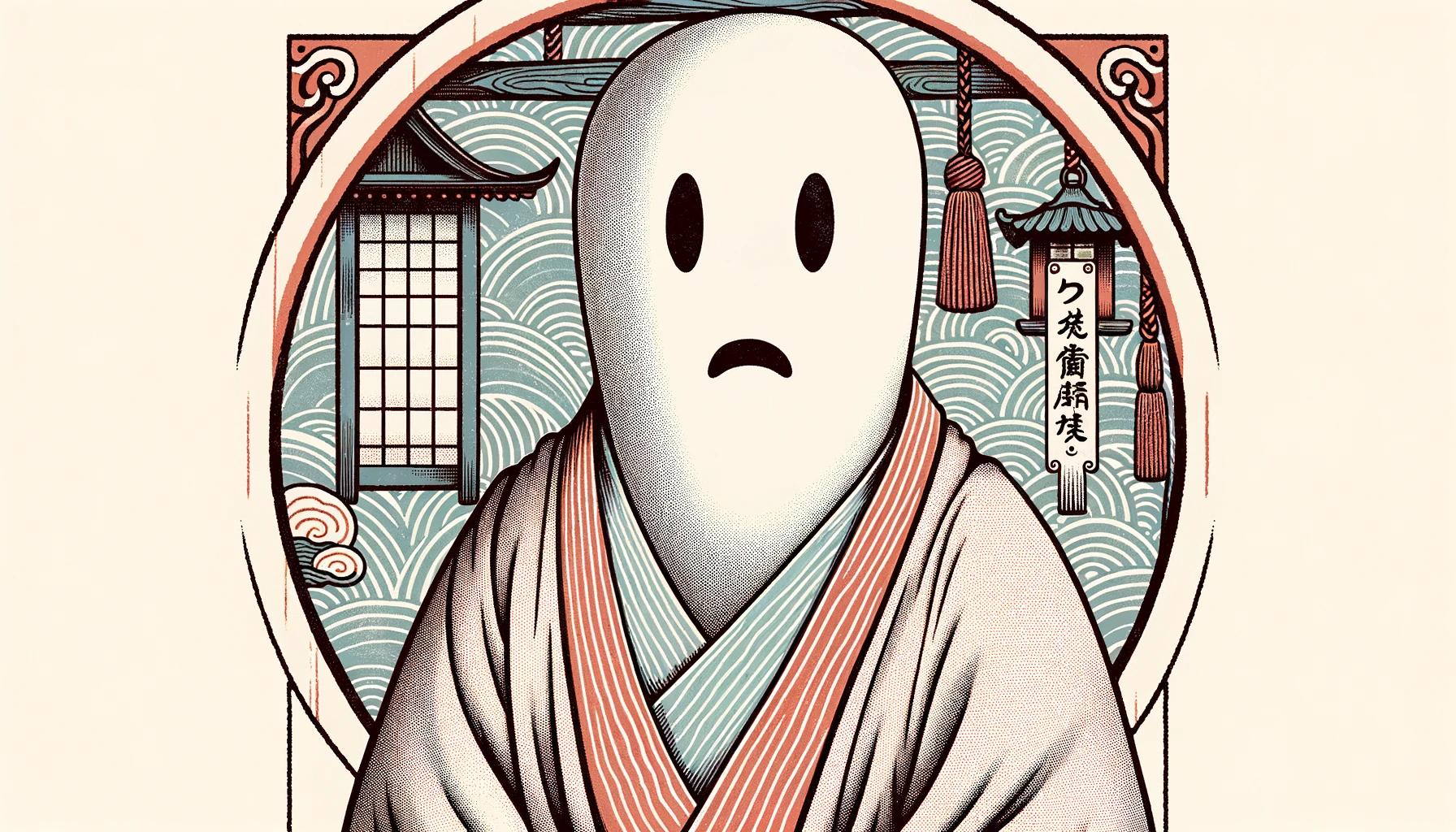
Noppera Bo yokai, also known as the faceless spirit, is a terrifying creature from Japanese folklore. It has the ability to blend in with humans, only revealing its true form when directly confronted.
With a blank sphere for a head, devoid of any facial features, Noppera Bo delights in causing fear and panic. It often works in groups, with one disguising itself as a familiar face to lure unsuspecting victims into its trap.
This enigmatic yokai has left a lasting impact not only in Japan but also in places with historical ties like Hawaii.
Origins of Noppera Bo Yokai
The Noppera Bo yokai holds a rich and intriguing history that dates back centuries. Exploring its origins allows us to delve into the fascinating realm of Japanese folklore and uncover the cultural significance behind this enigmatic creature.
Historical Background
The historical background of Noppera Bo reveals a deep connection to ancient Japanese beliefs, supernatural legends, and traditional customs. Within the context of Japanese history, yokai, or supernatural creatures, have been an integral part of the country’s folklore for generations.
During Japan’s Edo period (1603-1868), stories and tales about yokai flourished, intertwining with religious and cultural practices. Noppera Bo emerged as a prominent figure within this realm, representing the mysterious and unsettling aspects of the human psyche.
Folklore and Myths
Throughout Japanese folklore, Noppera Bo is known as the faceless yokai, capable of inflicting fear and terror upon unsuspecting individuals. Countless stories depict its haunting encounters, leaving a lasting impression on those who have experienced its malevolent presence.
Within these tales, various explanations and myths have emerged surrounding the origins and nature of Noppera Bo. Some versions suggest that it is a transformed fox spirit (kitsune) or a mischievous raccoon dog (tanuki), while others attribute it to the shape-shifting mujina yokai.
Regardless of its exact origin, the tales of Noppera Bo have captured the imaginations of storytellers and have been passed down through generations.
The folktales surrounding Noppera Bo often serve as cautionary tales, warning individuals about the dangers of misplaced trust and the fragility of human perception.
These stories reflect the complex relationship between humans and the supernatural in Japanese culture.
- The historical background of Noppera Bo reveals its connections to ancient Japanese beliefs and supernatural legends
- Dating back to Japan’s Edo period, yokai have played an influential role in Japanese folklore
- Noppera Bo represents the enigmatic and unsettling aspects of the human psyche
- Various folktales and myths surround the origins and nature of Noppera Bo
- Some stories link Noppera Bo to fox spirits, raccoon dogs, or shape-shifting yokai
- The tales of Noppera Bo serve as cautionary tales about trust and human perception
Description and Traits of Noppera Bo Yokai
The Noppera Bo yokai possesses unique characteristics that make it a truly unsettling entity.
It is known for its distinct features, deceptive abilities, and its knack for transformation.
The Faceless Appearance
One of the most distinguishing traits of the Noppera Bo is its lack of a face. Its head is a blank sphere without any eyes, nose, mouth, or distinguishing features. This feature alone generates a deep sense of fear and powerlessness in those who encounter it.
The inability to anticipate the intentions of this entity adds to its eerie presence.
Ability to Blend in with Humans
The Noppera Bo possesses the uncanny ability to seamlessly integrate into human society. It can assume the appearance of an ordinary person, making it difficult to discern its true nature. This deceptive camouflage allows the Noppera Bo to move among us undetected, waiting for the opportune moment to reveal its true form.
Deception and Transformation
The Noppera Bo delights in causing terror and chaos. It often operates in groups, with its members working in tandem to frighten unsuspecting victims. After the initial encounter with one faceless entity, the victim may unwittingly confide in another seemingly kind person, who then reveals their own lack of a face.
This deception creates an illusion of trust shattered and deep emotional desolation.
Furthermore, the Noppera Bo is known to impersonate close relatives or loved ones, further intensifying the betrayal felt by its victims.
Its ability to mimic familiar faces adds to the psychological torment it inflicts, causing lasting trauma and fear.
In summary, the Noppera Bo yokai is characterized by its faceless appearance, ability to blend in with humans, and its penchant for deception and transformation.
Its lack of facial expression generates fear and a sense of powerlessness, while its deceptive tactics leave victims emotionally shattered. This enigmatic creature’s impact extends far beyond Japan, spreading its influence to other regions with historical ties to the country.
Terrifying Encounters with Noppera Bo Yokai
Terrifying and unsettling, encounters with Noppera Bo yokai leave victims in a state of fear and disarray. Let’s delve into the haunting locations, the twisted methods employed to scare unprepared victims, and the heart-wrenching illusion of betrayal when loved ones are replaced by this malevolent entity.
Haunting Locations: Roads, Inns, and Shops
Noppera Bo yokai lurks in a variety of places, making encounters unpredictable and shrouded in dread. It is commonly found along desolate roads, isolated inns, and dimly lit shops. These mundane settings, once considered safe havens, become breeding grounds for fear and terror when traversed by unsuspecting individuals.
Modus Operandi: Scaring Unprepared Victims
The modus operandi of Noppera Bo relies on exploiting the element of surprise and shock. Initially appearing as a familiar face in the crowd, the yokai abruptly discards its human disguise, unveiling its featureless countenance at the most opportune moment.
The sheer horror experienced by victims caught off guard fuels the sadistic pleasure of this menacing creature.
Supplanting Loved Ones: Illusion of Betrayal
Noppera Bo takes its menacing tactics further by impersonating loved ones or acquaintances, further intensifying the emotional devastation experienced by its victims. In a twisted illusion of trust and familiarity, it preys upon the unsuspecting, manipulating their deepest affections and transforming joy into despair.
The feeling of betrayal inflicted by this heartless creature cuts deep, leaving its victims in a state of profound psychological anguish.
The terrifying encounters with Noppera Bo leave scars that are not easily healable. Its ability to strike fear in the most unexpected places and times ensures that it remains a haunting presence in the realm of Japanese folklore, transcending borders and affecting victims worldwide.
Noppera Bo Yokai in Popular Culture
Explore the influence of Noppera Bo yokai in movies, video games, and its impact on the horror genre.
Influence in Movies and Video Games
Noppera Bo yokai has left its haunting mark on the world of entertainment, particularly in movies and video games. Its eerie and faceless appearance has been utilized to create terrifying experiences for audiences.
- Classic horror films, such as “Silent Hill,” have incorporated the image of Noppera Bo to create a spine-chilling atmosphere. The faceless entity serves as a symbol of the unknown and generates a sense of helplessness and fear.
- In the realm of video games, Noppera Bo appears as an antagonist in titles like “Yokai Monsters: 100 Monsters.”
Its ability to imitate familiar faces and evoke betrayal creates a captivating and terrifying gameplay experience.
Symbolism and Impact on Horror Genre
The symbolism of Noppera Bo yokai goes beyond its physical appearance, making it an icon of fear and deception. In the horror genre, Noppera Bo represents the darkness that lies beneath seemingly ordinary encounters, highlighting the unpredictability and vulnerability of human nature.
Furthermore, Noppera Bo’s presence in popular culture reflects society’s fascination with the macabre and supernatural. Its tales serve as cautionary tales about encountering unknown entities and the consequences of trust being shattered.
Overall, Noppera Bo yokai’s influence in movies, video games, and the horror genre showcases its enduring presence within popular culture. Its faceless visage continues to captivate audiences and remind them of the mysteries and terrors that lurk in the shadows.
Associations with Other Yokai
The Noppera Bo yokai, while terrifying in its own right, has intriguing connections to other yokai creatures in Japanese folklore. These associations shed light on the intricate web of supernatural beings that inhabit the traditional tales of Japan.
Connection to Kitsune, Tanuki, and Mujina Yokai
One of the striking associations is with the kitsune yokai, the mischievous fox spirits known for their shapeshifting abilities. Similar to the Noppera Bo, kitsune yokai can transform into humans and mimic their appearance.
However, while Noppera Bo focuses on the lack of facial features, kitsune can manipulate their entire form to deceive and confuse their victims.
Another yokai with links to Noppera Bo is the tanuki, a creature resembling a raccoon.
Tanuki yokai are known for their ability to shape-shift into various objects, often using their transformation skills for playful tricks and pranks. While both tanuki and Noppera Bo have deceptive natures, the extent of their transformations and intentions differ greatly.
The mujina yokai, often mistaken for Noppera Bo, is yet another creature related to this faceless spirit. Mujina yokai, commonly referred to as “badgers,” are known for their trickster abilities and their talent for transforming into different shapes.
It is crucial to differentiate between the two, as Noppera Bo is specifically associated with the absence of facial features, while mujina yokai possess them but can change their appearance at will.
Common Misconceptions about Noppera Bo
Despite the distinct characteristics of Noppera Bo, there are some common misconceptions surrounding this enigmatic yokai. One of the misconceptions is its frequent misattribution to mujina yokai. This confusion arises due to their misidentified resemblance and shared ability to transform.
However, the absence of a face sets Noppera Bo apart and distinguishes it from other yokai.
Another misconception is regarding its motives and behavior. While Noppera Bo delights in terrifying unsuspecting victims, some wrongly assume that it causes physical harm.
In reality, the fear and emotional turmoil it inflicts serve as its primary objective, seeking to unsettle and leave a lasting impact on those unfortunate enough to encounter it.
Understanding these associations and dispelling misconceptions surrounding Noppera Bo yokai allows for a deeper appreciation of its unique presence in Japanese folklore and the intricate relationships between various supernatural entities.
Phenomena Beyond Japan: Sightings and Legends
Phenomena related to the Noppera Bo yokai extend beyond the borders of Japan, captivating the imagination of people worldwide. Here, we explore reports and legends of sightings that transcend cultural boundaries.
Reports Outside of Japan
Though originating in Japanese folklore, accounts of Noppera Bo encounters have emerged from various parts of the world in recent years. Witnesses have shared chilling stories of faceless entities resembling the Noppera Bo appearing in unexpected places, causing fear and confusion.
These sightings have occurred in diverse locations, including North America, Europe, and even Australia.
The consistent description of the Yokai’s featureless visage and its unnerving behavior suggests a universal element to its existence.
These reports have sparked interest among paranormal enthusiasts, prompting discussions and investigations into the phenomenon.
Historical Ties to Places Like Hawaii
One intriguing aspect of Noppera Bo legends is their historical ties to places beyond Japan, such as Hawaii. Due to Hawaii’s historical connections with Japan and the presence of a significant Japanese diaspora, Noppera Bo sightings have been reported on the islands.
Hawaii, with its rich cultural heritage and folklore, provides a unique backdrop for the intertwining of Noppera Bo tales and local legends. Accounts of faceless spirits haunting remote areas or manifesting themselves in traditional Hawaiian settings have added another layer of intrigue to the yokai’s mythos.
It’s worth noting that these sightings align closely with the traditional characteristics attributed to the Noppera Bo yokai. The encounters in Hawaii and similar locations serve as a testament to the enduring nature of this folklore and its ability to transcend geographical boundaries.
Keep exploring the fascinating world of yokai legends through the related sections in this article as we delve deeper into the connections, comparisons, and contrasting elements of these curious creatures.
Unveiling the Mystery: Exploring the Meaning and Significance
Psychological Impact on Those Who Encounter Noppera Bo
Encountering the faceless yokai, Noppera Bo, can have profound psychological effects on individuals. The sheer unsettling nature of its featureless visage instills deep-seated fear, leaving a lasting mark on the psyche of those who come face to face with it.
The lack of facial expression denies humans the ability to interpret intentions, heightening feelings of vulnerability and powerlessness. The experience may lead to long-lasting trauma, anxiety, and a heightened sense of distrust in others, especially when it involves impersonating loved ones.
Cultural Reflections and Interpretations
The presence of Noppera Bo in Japanese folklore reflects deeper cultural beliefs and fears. The concept of a yokai that can imitate familiar faces and deceitfully exploit trust resonates with the value placed on sincerity and honesty in Japanese society.
Noppera Bo serves as a cautionary tale, reminding individuals to remain vigilant and skeptical even towards seemingly familiar faces. The legend also explores themes of betrayal, highlighting the impact of shattered trust on emotional well-being.
These cultural reflections and interpretations showcase the complexity of human emotions and the influence of folklore on societal values.











